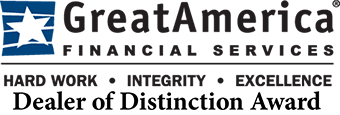Measuring quality may be subjective, however, there are several ways you can assure the highest quality when it comes to your printing.
 While the measure of quality can be somewhat subjective at times, there are certainly appropriate applications of quality levels in everything we do. I probably shouldn’t have used the word appropriate after showing you a TV dinner, but I’m trying to make a point. I really wonder why millions of them are consumed each year. Oh well - back to quality thinking.
While the measure of quality can be somewhat subjective at times, there are certainly appropriate applications of quality levels in everything we do. I probably shouldn’t have used the word appropriate after showing you a TV dinner, but I’m trying to make a point. I really wonder why millions of them are consumed each year. Oh well - back to quality thinking.
In relation to potential customers, clients, members, guests, or even employees, the quality of everything you present is a direct reflection of your organization. This relates to everything you may do, however, for this commentary I would like to narrow the scope of thought to the quality of printed images.
To get started, I consider whether an item is customer facing or internal use only. For customer facing material, there are many factors to consider. One for example, an instruction sheet for assembly or simple use doesn’t require high quality paper, elaborate design or even high-quality images in color. In contrast a product marketing sheet or brochure should have quality attributes that match the price point of the item. The quality and weight of paper or other substrate, the method of production, the images and design should all be considered when making the printed item fit the use.
The design of a printed item may be limited by the resources you have. There are many points of design to consider with this issue. A good illustration of this when you would like to bleed an image off the edge of the paper. This makes your printed piece look far more professional than having a white boarder around the edges. However, most inkjet and laser printing devices need a non-image area around all four sides of the sheet to avoid excess ink or toner building up somewhere as it falls off the edge of the sheet. A printed sheet must be trimmed by some means to remove the non-image area, thereby producing the bleed edge. If you are printing one poster this is easy. Trimming six hundred brochures will be better accomplished with a guillotine cutter that can cut large stacks of paper.
The paper or substrate is an important part of not only making a piece fit the use, but also can greatly affect the quality of the image. Heavier papers generally cost more because the pulped fiber to make them is the most expensive component of the product. Heavy paper can communicate a higher value of the piece, but your print method and equipment must be able to produce a quality image on the sheet. Heavy weight textured or dark colored sheets can add interest but are difficult to image with laser and inkjet devices found in most offices.
While this only covers a few of the elements to consider when producing the quality of printed material you may desire, I hope this provides a little guidance for improvement. I’ll finish by mentioning what sparked the idea for this subject in the first place. While printing a project for a client, I could tell that the file was a scan of a previous print or copy. This meant that the final product was at least a third generation from the original file and the quality reflected it. With degradation from the first printing, then scanning, then printing again, the quality may be fine for internal use but would be a poor reflection if it was for customer use. Like a dinner made from good ingredients, printing directly from the original file will always yield better quality than any process involving a scan or a factory in the case of dinner.
Resolve your print quality issues by Contacting a representative from Doing Better Business and explore our selection of printers or just get help with troubleshooting and maintenance.

